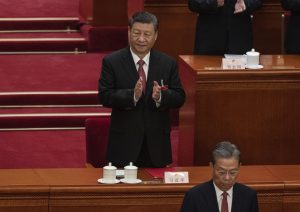Pakistan’s solar boom has stunned both its government and energy analysts worldwide. Satellite imagery paired with Chinese customs data revealed that Pakistan has rapidly become the sixth-largest solar market globally, with rooftops across the nation covered in solar panels.
Over the past three years, Pakistan has imported over 25 gigawatts of solar panels from China, increasing its power capacity by 50%. This surge has been a grassroots movement driven by high electricity costs and the need for reliable power, with little coordination from the state.
The main driver of this solar revolution is Pakistan’s high electricity rates, which are significantly more expensive than in neighboring countries. Legacy agreements with independent power producers and reliance on costly liquefied natural gas have exacerbated the situation, especially after the 2022 global energy crisis.
In response, businesses and wealthier individuals have turned to solar panels as a cost-effective alternative. The technology pays for itself in just a few years, freeing users from the unstable and expensive national grid. This shift has forced the government to raise grid electricity rates further, burdening those who can’t afford to switch.

Pakistan’s Solar Boom Surges to Global Sixth Place, Transforming Energy Landscape with Grassroots Revolution
This phenomenon underscores a broader issue in global energy modeling: underestimating clean energy demand in developing nations. Historical energy forecasts have consistently failed to predict the scale of demand when affordable energy becomes accessible, as seen in 19th-century Britain, post-WWII America, and industrializing China.
Solar energy, in particular, has outpaced expectations; the International Energy Agency (IEA) has underestimated its growth every year since 2006. Pakistan’s current trajectory, contributing 16 gigawatts of solar capacity by 2024, highlights the gap between projected and actual renewable energy adoption.
Western energy forecasters often overlook the aspirations of growing middle classes in developing nations. Pakistan’s nearly 100 million-strong middle class will inevitably demand the energy-dependent comforts taken for granted in wealthier countries.
This is especially urgent in the context of climate change, as deadly heat waves become more frequent and severe. Limited projections of Pakistan’s energy needs fail to account for the widespread adoption of air-conditioning and other technologies necessary to protect lives in a warming climate.
The mismatch between energy models and real-world demand is shaped by “status quo bias” in climate and economic modeling. Such models often assume static conditions and insufficient growth in energy access for poorer nations, inadvertently reinforcing global inequalities.
Projections like the IEA’s net-zero pathway often underestimate how much power countries like Pakistan will need to sustain their development, particularly as they cope with the impacts of climate change.
Ultimately, the world must prepare for a future where both developing and developed nations consume more energy. This means scaling up clean energy production to meet surging demand across diverse regions.
Pakistan’s solar revolution is a critical reminder: the energy transition must not only focus on reducing emissions in wealthy nations but also on ensuring equitable access to clean, affordable energy for growing economies. The task is not just to power Lahore but to do so in a way that supports sustainable growth globally.























